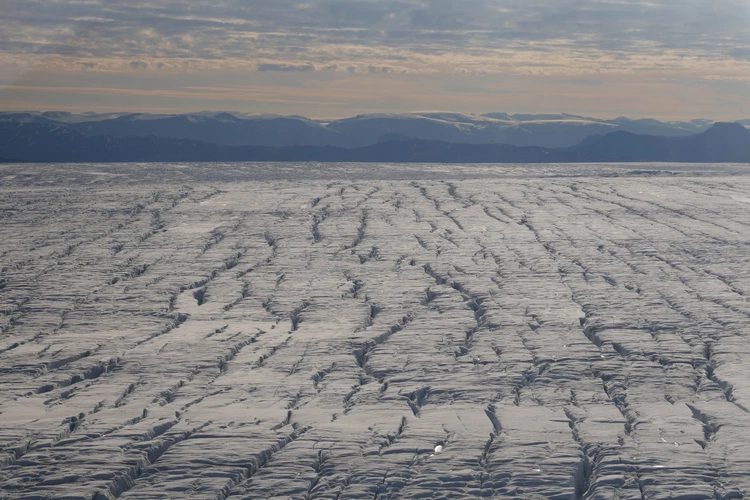
Large-scale study finds crevasses on Greenland Ice Sheet increasing in size and depth – and may cause more rapid loss of ice from region
By
For much of the twentieth century, the Greenland Ice Sheet made little contribution to sea level rise, having an almost equal balance of annual snowfall gain versus ice or meltwater loss. But in recent decades, such an equilibrium has been disturbed.
Now, a new study led by Durham University – and published in Nature Geoscience journal – has shown one of the ways in which the the second largest body of ice in the world is changing: it is cracking far more rapidly in response to climate change.
Enjoying this article? Check out our related reads:
Using more than 8,000 3D surface maps, scientists found crevasses – wedge-shaped fractures or cracks that open in glaciers – had increased in both size and depth at the fast-flowing edges of the ice sheet, between 2016 and 2021. This had occurred at a rate much more quickly than previously recorded.
On the Greenland Ice Sheet, crevices are also getting larger and deeper in areas where ice is flowing more rapidly, and researchers say this could further speed up the mechanisms behind the loss of Greenland’s ice.

As study co-author Professor Ian Howat explains: ‘As crevasses grow, they feed the mechanisms that make the ice sheet’s glaciers move faster, driving water and heat to the interior of the ice sheet and accelerating the calving of icebergs into the ocean.’
‘These processes can in turn speed up ice flow and lead to the formation of more and deeper crevasses – a domino effect that could drive the loss of ice from Greenland at a faster pace,’ Howat continues.
During the study, the increase in crevasses on the Greenland Ice Sheet were offset by a reduction in crevasses at Sermeq Kujalleq, the fastest-flowing glacier in Greenland, which instead experienced a temporary slowdown in movement. After factoring in this reduction, scientists found that the number of crevasses across the entire ice sheet increased by 4.3 per cent in the five-year period monitored.
However, scientists are keen to point out that since their study, the flow speed of Sermeq Kujalleq has increased again, suggesting that the period of balance between crevasse growth and closure on the ice sheet is not over – and perhaps more crevasses are on the horizon.
How fast is the Greenland Ice Sheet melting?
Since 1992, Greenland’s ice melting has led to around 14mm of sea level rise due to climate change – and by 2100, researchers estimate that the rate at which the ice sheet is melting could cause add up to 30cm (one foot) to sea levels. In a nutshell, this is caused by climate change: more melting occurs due to hotter air temperatures, and more flow of ice occurs into the ocean thanks to warming oceans.

Already, around 28,707 sq. km (11,000 sq. miles) of the Greenland Ice Sheet and surrounding glaciers have melted in the last thirty decades – an area equivalent in size to Albania, and representing approximately 1.6 per cent of its total ice and glacier cover. Areas once covered with ice and snow are being replaced by rocks, shrub and even vegetation, changing the familiar icy landscape.
If Greenland’s ice entirely melted, the effects would be significant, adding seven metres (23 feet) of sea level to the world’s oceans, severely threatening coastal communities across the globe. Such a scenario would also cause the length of a day to increase – by around two milliseconds – as Earth would rotate slower.
The best way to protect the Greenland Ice Sheet, and to ensure such effects don’t take hold, is a familiar caution from scientists: limit global greenhouse gas emissions and keep warming under the 1.5C threshold.




